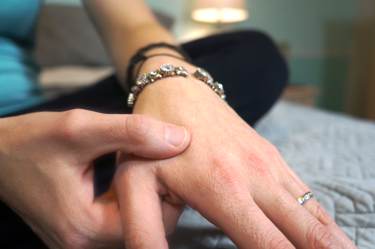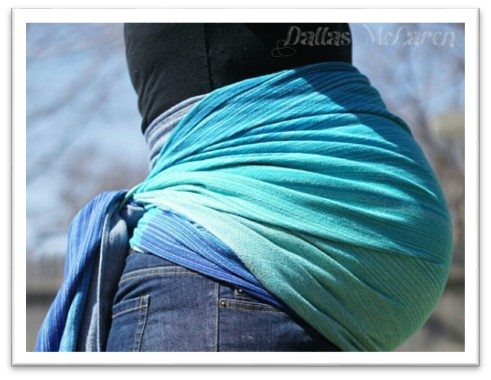Our HypnoBirthing Partners have an important role to play during birth, leading the birthing mother through labour with their voice and their touch. Our aim is to educate partners to be the best support for mum by giving them the toolbox of HypnoBirthing support techniques to help keep mum in that wonderful healing room. Here are additional tools of Rebozo and Acupressure that they can use during labour to help mum if she is experiencing discomfort, malposition of baby, or if labour has slowed or stalled.
Appropriate Support During Labour
When supporting a birthing mother, our aim is to ensure she feels undisturbed, unobserved, safe and completely supported. The birth companion’s role is to be the advocate for mum and baby, and ensure that she is in a state of physiological and emotional balance. Birth has it’s own rhythm and flow, and tension can build for many reasons. Acupressure and Rebozo are gentle support tools that can be used to help release tension and restore the energy flow of the body and help reconnect that mind/body balance.
Acupressure for Pregnancy and Labour
Acupressure is a companion of acupuncture, and has been practised in Asia for over 5,000 years. It is part of the practice of Traditional Chinese Medicine and is based on the theory that there are meridians, a series of channels, which carry Qi (energy) through the body. There are more than 600 pressure points found on these meridians. By working with various points, either by using acupuncture or acupressure, Traditional Chinese Medicine helps promote the body’s own capacity to restore a balance of health and it encourages the production of endorphins thereby relieving discomfort and balancing body energy, creating “space” for natural physiological functions to occur. Acupressure’s healing touch reduces muscular tension, increases circulation, and enables deep relaxation.
When Is It Safe to Use Acupressure?
Pregnant women should check with their doctors before trying any acupressure treatments in pregnancy. Women during the first 10 to 12 weeks and final four weeks of pregnancy, are more susceptible to acupuncture treatments. Acupressure can increase blood flow to the uterus, influence hormonal responses, and stimulate uterine surges, so it should only be used in pregnancy with their doctor’s consultation. The below acupressure points are safe for use during labour, but we still recommend that couples discuss these techniques with their care providers before using them.
5 Fantastic Acupressure Points for Labour
1. Large Intestine 4 / Initiating Labour & Birthing Phase

The Large Intestine 4 is the most common point in acupressure therapy, the LI4 point is known as Hegu, meaning “joining valley.”
This technique is not suitable for pregnancy.
It’s located on the back of the hand, deep between the webbing of your thumb and pointer finger. The LI4 point is believed to induce labour. It can also reduce discomfort and strengthen immunity, among other problem-relieving functions.
What to do: Apply soft pressure with your thumb and massage the point for one minute, take a one-minute break and start again.
2. Lower Back Points / Easing Back Discomfort or Counter-pressure During Strong Surges

The lower back points are extremely helpful if you are experiencing back labour or in the middle of an intense surge as a counter pressure. These points are located in the lower back region and can be individualised to the labouring woman depending on where it feels the best to her. Sometimes the the point might be more outwards on the lower back. The BL32, also called the Ciliao, which means second crevice, is located in the dimple of your buttocks, which you can find by running your fingers down your spine until you reach right above your intergluteal cleft.
What to do: Press firmly on the point and massage, moving towards the buttock. This should be repeated for a few minutes. You can apply pressure with your thumbs or knuckles leaning in with your body weight if the mother would like more pressure.
3. Kidney 1 / Grounding and Calming – Effective During Transitional Stage

The Kidney 1 point is located in the centre of sole of the foot in the depression next to the bottom of the ball of the foot. These points pull energy downward and are typically useful during the transition phase of labour. This is also a great point for calming to help with stress and anxiety
What to do: Apply soft pressure with your thumb and massage the point for one minute, take a one-minute break and start again.
4. Urinary Bladder 60 / Increases circulation – Provides comfort – Effective During Transitional Stage

This point is known as the Kunlun, named after the mountain range in Asia.
The Kunlun point is located on the foot, in the depression between the ankle and the Achilles tendon. It’s known to increase circulation, promote labour, ease labour discomfort, and reduce obstruction. Most women also like this point during the transitional phase of labour.
What to do: Use your thumb to apply light pressure to the BL60 and massage the point for a few minutes.
5. Spleen 6 / Stimulates surges- Effective with LI4 – Effective for Slowed or Stalled Labour

The spleen 6 point (SP6) is considered one of the more versatile and commonly used points. It’s used for many conditions, including initiating labour. Known as Sanyinjiao — the SP6 is located above the ankle, on the backside of the shinbone (lower calf). About the distance of four fingers up the backside of the calf. There will be a tender spot, so find that. In case of a stalling labour, use this point along with
large intestine 4 to encourage stronger surges. Have the woman apply pressure to the hand point, whilst the birth companion gives pressure to Spleen 6.
Not to be used during pregnancy.
What to do: Use your index finger to apply firm pressure on the point for a few seconds. Take a one-minute break before repeating.
Rebozo for Pregnancy and Labour
The rebozo is a traditional Mexican Shawl used as a multi-functional tool for pregnancy, labour and the post-natal period. It is primarily used to help baby rotate in pregnancy or labour, assist mum into various positions, enhance relaxation and act like an extension of the birth companions arms, allowing the partner to help support the labouring mother’s weight so she doesn’t have to.
The Rebozo is a wonderful tool for any mother approaching birth, and can be used for carrying baby.
When NOT to Use Rebozo?
Pregnant women should check with their doctors care providers before using any rebozo techniques in pregnancy and labour. The below techniques are suggested as labour techniques, and done gently are safe.
- Avoid sifting with the Rebozo when there is a threat of miscarriage, such as signs of bleeding or low cramping in early pregnancy, history of multiple mid to late pregnancy miscarriages or losses in past pregnancies.
- When the round ligaments are tight or cramping in mid or late pregnancy, the Rebozo wouldn’t be dangerous to the baby, but could make the mother’s round ligament spasm. So, do only a lift and very gentle and slight rocking. Otherwise you might “set off” a round ligament spasm which hurts. If the mother isn’t getting these spasms, you are not likely to set them off with the Rebozo.
- Do not perform vigorous or even moderate sifting with the Rebozo or a Rebozo substitute against an anterior placenta.
- We do not recommend partners use the Robozo for repositioning of baby. This should only be done by their careproviders. Please note that when using the Rebozo for repositioning, it should never be done through force, jerking one end or flipping the abdomen in the direction you want baby to go. Typically this may not be harmful, but occasionally baby’s head and body are at 180 degree difference and this jerking of the Rebozo against the mother may jerk the baby the wrong direction.
A rule of thumb when using the rebozo, and any other comfort method, is to always ask the labouring woman if she is comfortable with what is being done. If she likes the way it feels, the partner should continue with the comfort measure. If at anytime the woman feels discomfort the partner should stop what he/she is doing. The partner can readjust the rebozo or discontinue its use altogether. Always measure continuing the use of any comfort method based on how it feels to the labouring woman. The rebozo is meant only for comfort, support, and extension of the birth companions arms. The rebozo should never be used as a treatment by a birth companion.
6 Fantastic Rebozo Uses for Labour
1. Wall Shakes / Optimum Fetal Positioning – Stimulates Surges – Ease back discomfort

The Wall Shakes can be used to help baby move into the optimal position, relax tight ligaments, as well as encourage and stimulate surges. The pressure on the woman’s back helps ease any back discomfort for mal-positioned babies, and during strong surges.
What to do: Have the mother rest against the wall. Place the rebozo around the woman’s lower back and buttocks and sift from side to side.
2. Hammock Sifting / Optimum Fetal Positioning – Relax nervous system – Ease back discomfort

The hammock sifting helps baby move into the optimal position, as well as being a wonderful comfort for the mother as all her weight is lifted. This rhythmic movement relaxes mum, enhances the release of endorphins, releases tight ligaments and back tension.
What to do: Have the mother lay on the floor resting her lower back and buttocks on the rebozo. Standing over the mother, gently lift her, sifting the rebozo, rocking her hips from side to side.
3. Polar Bear Shifting / Relaxes ligaments – Optimal fetal positioning – Great for OP babies

The polar bear shifting is a wonderful addition to the polar bear position that we teach in HypnoBirthing. Using this gentle shifting technique helps relax the mothers ligaments, and encourage baby into the most optimal position for birth.
What to do: Have in either the polar bear position from her knees or resting over the birth ball. Place the rebozo around the mothers belly and gently lift and shift the rebozo from side to side.
4. Belly Hold / Ease Back Ache – Ease Weight of Belly – Optimal Fetal Positioning

The belly hold is ideal for helps relieve back tension from the weight of the baby. This is helpful for mothers in the later stages of pregnancy, as well as a during labour, as it feels although you are being swaddled and comforted, and helps her relax in between surges. This lifting and supportive hold helps baby move into the pelvis optimally.
What to do: Wrap the rebozo starting from the back (as we do in a wall shake) and wrap the rebozo to the front and around the belly, gently lifting and tying off at the back.
5. The Shimmy / Helps Relax the Bottom and Thighs

The shimmy feels wonderful for the birthing mother during surges. Please note that for mothers that have experienced any type of sexual abuse, being in hands and knees positions, and having the shaking pressure in that area can feel threatening.
What to do: Place the Rebozo over the mothers lower back and buttocks. Hold tightly on either side, and shift the hips from side to side. This can be done quite quickly for a vibrating effect.
6. The Hip Squeeze / Ease hip discomfort / pressure

This hip squeeze with the rebozo is a wonderful alternative to the hip squeeze applied by the hands, which can become exhausting. The hip squeeze not only feels wonderful, it relieves pressure and helps open the pelvis. This feels good for the woman especially if she is experiencing back labour.
What to do: The rebozo is wrapped around the standing woman’s hips, then tied as tight as is comfortable for the woman at the front, back, or side in a knot. Only continue if the woman likes the way it feels. Alternatively if you have two birth supports, wrap the rebozo around the woman’s hips. The two partners stand beside the mother, and hold the end of the rebozo as it cris-crosses in front of her. The patterns then pull on the rebozo as tight as is comfortable for the woman.









